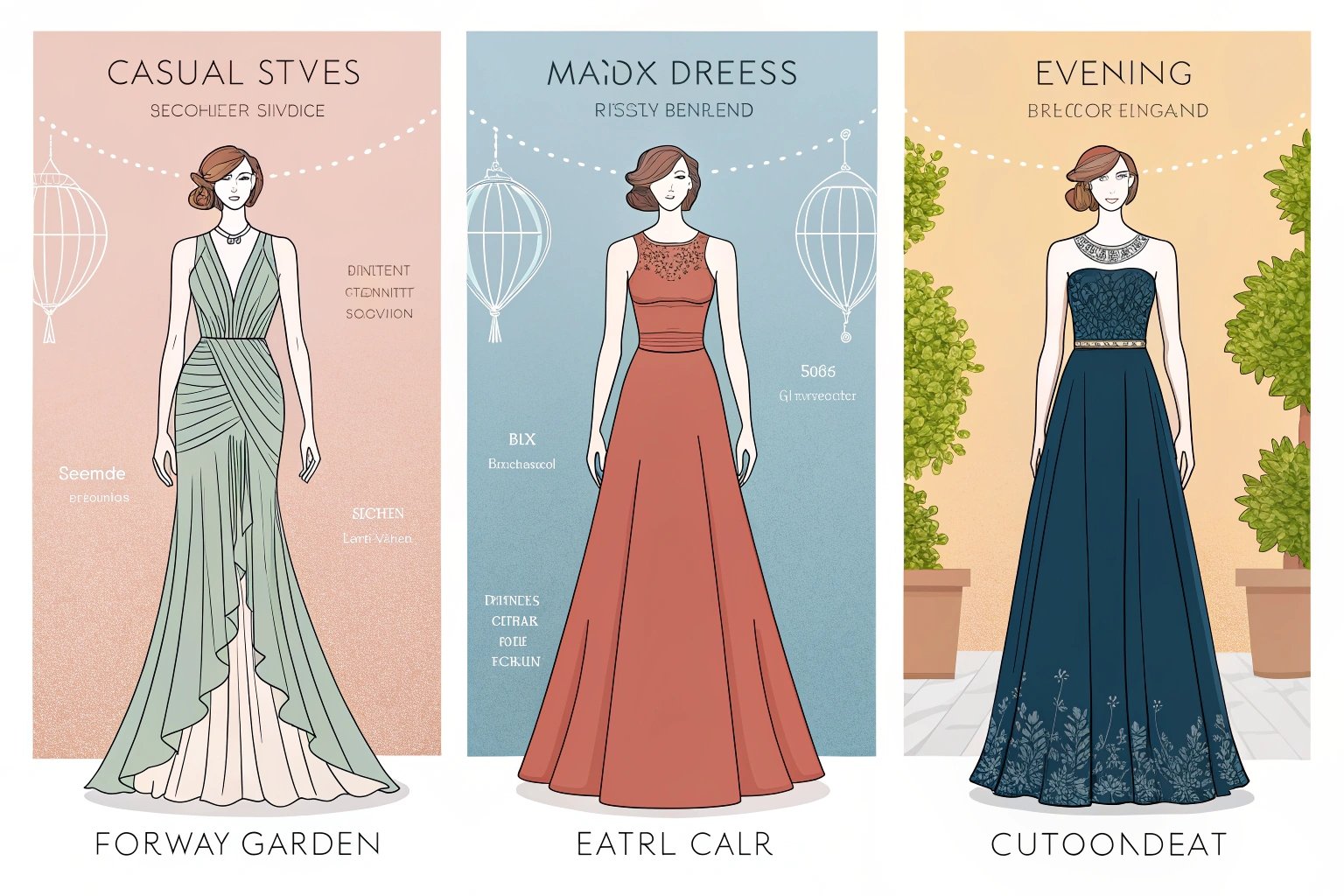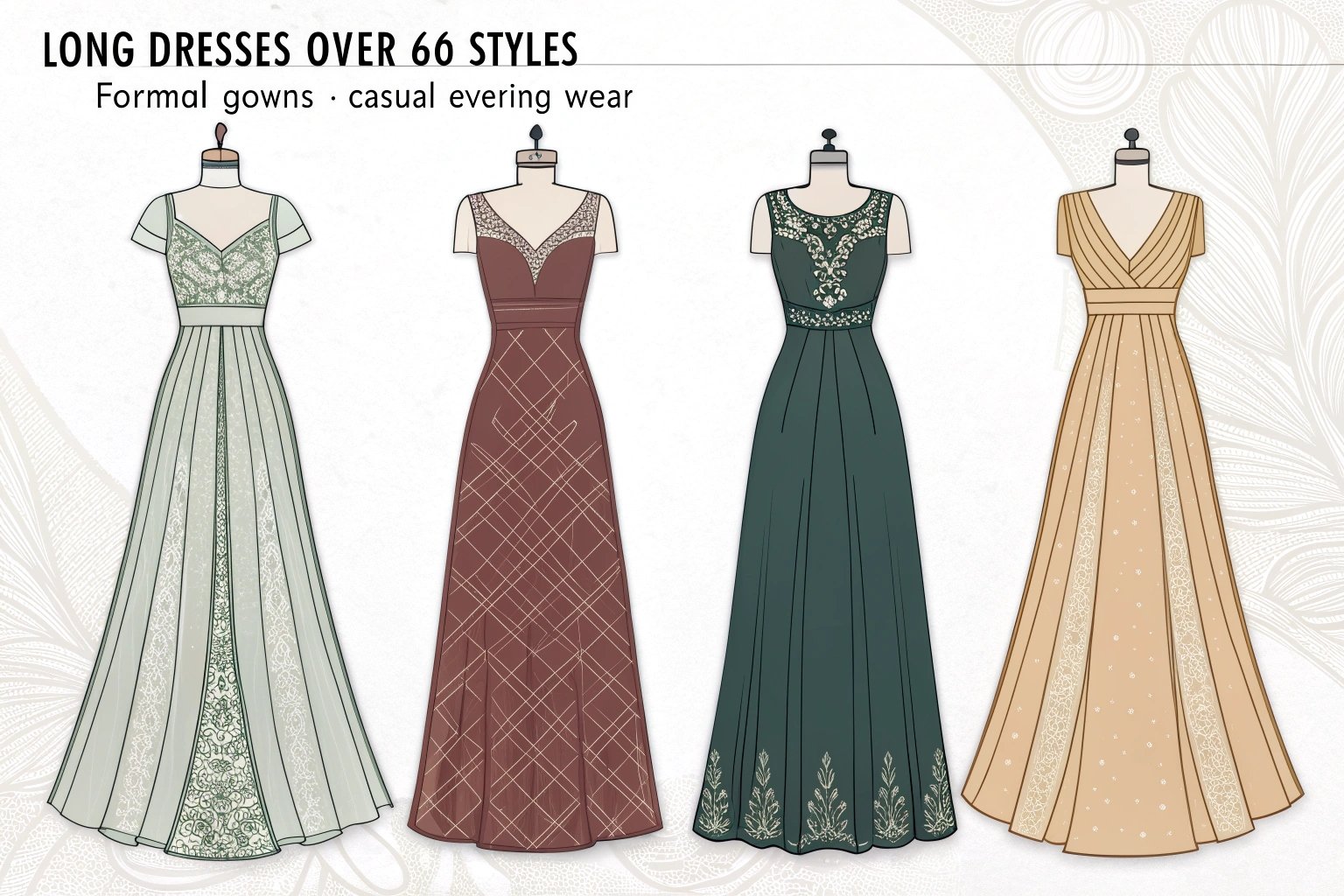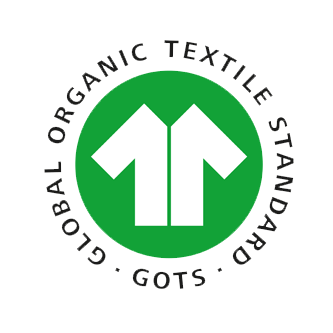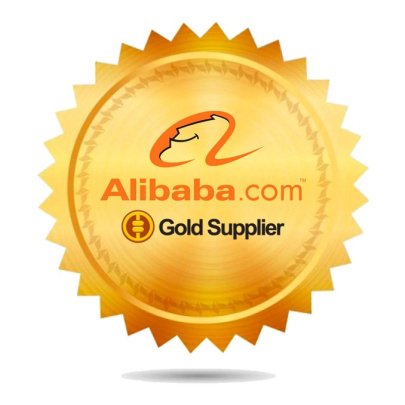The sportswear industry is one of the most competitive and fast-evolving sectors in the global market. Major sportswear brands like Nike, Adidas, Puma, and Under Armour have firmly established themselves as market leaders, dominating both retail sales and consumer loyalty1. But what makes these brands so successful? How do they stay ahead of the curve, and what trends are shaping the future of the industry?
Understanding the dominance of these brands and the strategies behind their success can help uncover the key elements that contribute to their growth and longevity in a competitive industry.
In this article, we will explore the leaders in the sportswear industry2, what makes them successful, and how new entrants can carve out a niche in this highly competitive market.
Which Brands Are Leading the Sportswear Industry?
The sportswear industry2 is led by several key players that have managed to stay at the top of their game. Among them, Nike, Adidas, Puma, and Under Armour stand out as the most influential and profitable brands in the global market.
These brands have built a strong reputation not just for performance apparel, but for creating lifestyles around their products, which helps them stay relevant year after year.
 Nike Office Meeting
Nike Office Meeting
Key leading brands in sportswear:
| Brand | Estimated Global Market Share | Key Products/Focus Areas |
|---|---|---|
| Nike | 27% (global market share) | Sneakers, athletic apparel3, sports equipment. |
| Adidas | 19% | Sports footwear, activewear, football apparel. |
| Puma | 5% | Sports footwear, training apparel, sports fashion. |
| Under Armour | 2-3% | Performance gear, activewear, footwear. |
How Have Nike, Adidas, and Puma Become the Giants of Sportswear?
Nike, Adidas, and Puma have successfully positioned themselves as the go-to brands for athletic apparel and sports fashion, thanks to strategic marketing, cutting-edge technology, and global recognition.
Their innovation in both product design and brand positioning has allowed them to maintain market dominance.
| Strategy | Nike | Adidas | Puma |
|---|---|---|---|
| Product Innovation | Focus on footwear technology like Flyknit and Air Max | Cutting-edge designs like Boost technology and Primeknit | Combining sports performance with fashion trends. |
| Global Reach | Nike is available in over 190 countries | Adidas is strong in Europe and North America | Puma has expanded its global reach in both sports and fashion. |
What Role Does Under Armour Play in the Global Sportswear Market?
Under Armour has positioned itself as a leader in performance-focused sportswear. While not as large as Nike or Adidas, it has developed a strong following for its innovative moisture-wicking fabrics and its emphasis on comfort and durability.
Under Armour has managed to carve out a distinct market niche by focusing on high-performance athletes.
| Under Armour Key Strategy | Description | Why It Works |
|---|---|---|
| Innovative Fabric Technology | Moisture-wicking, breathable fabrics for athletes | Creates products that enhance athletic performance. |
| Strong Athlete Endorsements | Partnerships with athletes like Steph Curry | Builds credibility and trust among athletes and fitness enthusiasts. |
What Makes These Sportswear Clothing Manufacturers So Successful?
The success of leading sportswear brands can be attributed to a combination of innovation, marketing savvy, and a deep understanding of consumer needs. These brands have effectively leveraged technology, strategic endorsements, and marketing campaigns to maintain dominance in a competitive market.
By constantly pushing boundaries in both product design and marketing strategies, these brands stay relevant to their target audiences.
Key factors driving success:
| Factor | Nike | Adidas | Puma |
|---|---|---|---|
| Technological Innovation | Nike’s proprietary technologies like Air Max, Flyknit | Adidas’ Boost technology, Primeknit | Puma’s innovative sports fashion designs. |
| Marketing & Endorsements | Partnerships with top athletes and celebrities | Sponsorships with major football teams and athletes | Collaborations with sports icons and designers. |

How Do Innovation and Technology Drive Success for Leading Sportswear Brands?
Innovation in materials, design, and manufacturing processes plays a significant role in the success of sportswear giants. Nike, for example, is known for its cutting-edge technology in shoes and athletic wear, like the Flyknit and ZoomX lines, which give athletes a performance edge.
Innovation not only improves the product’s functionality but also differentiates brands in a crowded market.
| Innovation/Technology | Nike | Adidas | Puma |
|---|---|---|---|
| Fabric Technology | Flyknit, Dri-FIT, NikePro | Primeknit, Climacool, Aeroready | DryCELL, PUMA Future, and EVOknit |
| Shoe Technology | ZoomX, Air Max, React | Boost, Lightstrike | NITRO, RS running shoes |
What Are the Key Marketing Strategies That Help Sportswear Brands Dominate?
Marketing plays a vital role in the success of sportswear brands. These brands have mastered the art of connecting with their audiences through emotionally compelling campaigns, athlete endorsements4, and partnerships with sports teams and events.
Effective marketing strategies help reinforce brand loyalty, create awareness, and increase customer engagement.
| Marketing Strategy | Nike | Adidas | Puma |
|---|---|---|---|
| Endorsements | Partnerships with athletes like LeBron James | Sponsorship of global football leagues and teams | Collaboration with athletes and sports icons |
| Social Media Engagement | Nike’s use of Instagram, Twitter, and YouTube | Adidas’ influencer marketing and user-generated content | Puma’s focus on engaging younger audiences through digital platforms |
| Athlete Sponsorships | Iconic sponsorships with Serena Williams, Cristiano Ronaldo | Endorsements from top athletes like Lionel Messi, James Harden | High-profile partnerships with athletes in soccer, track, and basketball |
How Do Sportswear Manufacturers Compete on a Global Scale?
The sportswear industry is highly competitive, and leading manufacturers need to continuously adapt to changing consumer demands, production challenges, and global market trends. Successful brands have mastered global supply chains and optimized their manufacturing strategies to stay ahead.
To maintain their competitive edge, sportswear brands must navigate the complexities of global supply chains, distribution strategies, and marketing on a worldwide scale.
How top brands compete globally:
| Competitive Factor | Nike | Adidas | Puma |
|---|---|---|---|
| Global Supply Chains | Extensive manufacturing in countries like China, Vietnam, and Indonesia | Sourcing from multiple countries with a focus on sustainability | Manufacturing across multiple regions, including Europe and Asia |
| Branding & Local Adaptation | Tailoring campaigns to specific regional markets | Adjusting product offerings based on local trends and preferences | Collaborating with local athletes to resonate with specific regions |
How Do Global Supply Chains and Manufacturing Strategies Affect Market Leadership?
Global supply chains enable sportswear brands to keep manufacturing costs low and ensure their products are available worldwide. Major players like Nike and Adidas have manufacturing facilities in several countries, which allows them to quickly respond to demand fluctuations.
Efficient global supply chains are a critical part of maintaining cost-effectiveness and speed in the sportswear market.
| Supply Chain Strategy | Nike | Adidas | Puma |
|---|---|---|---|
| Local Production & Sourcing | Manufacturing in China, Vietnam, and other Asian countries | Sourcing from sustainable suppliers worldwide | Factories in Asia and Europe for efficient production and shipping |
| Fast Fashion & Quick Response | Nike’s ability to quickly launch new products based on trends | Adidas’ "speedfactory" concept for faster production | Puma’s quick-turnaround production system for trending styles |
What Role Do Endorsements and Sponsorships Play in Dominating the Sportswear Market?
Endorsements from top athletes and sponsorships of major sporting events or teams are powerful tools for sportswear manufacturers. These partnerships give brands credibility, visibility, and direct access to their target audience.
Endorsements help build trust, increase brand recognition, and drive sales through association with sports icons.
| Endorsement Strategy | Nike | Adidas | Puma |
|---|---|---|---|
| Celebrity & Athlete Endorsements | LeBron James, Michael Jordan, Serena Williams | Lionel Messi, David Beckham, James Harden | Usain Bolt, Rihanna, and other sports icons |
| Sponsorship of Teams/Events | Sponsorship of major events like the Olympics | Sponsorships with top football leagues and clubs | Partnerships with major events like FIFA and UEFA |
What Are the Key Trends Shaping the Future of the Sportswear Industry?
The sportswear industry is constantly evolving, and brands must adapt to changing consumer preferences, technological advances, and sustainability initiatives. Key trends, such as sustainability, material innovation, and digital transformation5, are expected to play a major role in shaping the industry’s future.
Staying ahead of these trends will help manufacturers maintain their competitive edge and appeal to an ever-changing market.
Key trends shaping the future of sportswear:
| Trend | Description | Why It’s Important |
|---|---|---|
| Sustainability | Increased focus on eco-friendly materials and manufacturing processes | Aligns with consumer demand for ethical and sustainable products. |
| Material Innovation | Development of new performance fabrics like moisture-wicking, breathable, and temperature-regulating textiles | Ensures that products meet the needs of athletes and active consumers. |
| Direct-to-Consumer (DTC) Model | Growth in DTC sales through branded online stores | Provides brands with more control over their customer experience and sales channels. |
How Is Sustainability Affecting the Strategies of Leading Sportswear Manufacturers?
Leading sportswear manufacturers are increasingly incorporating sustainability into their operations, from sourcing eco-friendly materials6 to minimizing their environmental impact during production. Brands like Adidas are leading the way by creating shoes made from ocean plastic, while Nike is using sustainable fabrics in many of its products.
Sustainability is not just a trend—it’s a necessity for brands to meet the growing demand from eco-conscious consumers.
| Sustainable Strategy | Nike | Adidas | Puma |
|---|---|---|---|
| Eco-friendly Materials | Nike has shifted towards using recycled fabrics | Adidas uses Primeblue and Primegreen materials | Puma uses organic cotton and recycled polyester |
| Circular Economy | Nike’s “Reuse-A-Shoe” program | Adidas’ initiative to create fully recyclable shoes | Puma’s collaboration with the Ellen MacArthur Foundation on circular fashion |

What Innovations in Materials and Design Are Helping Manufacturers Stay Ahead?
Innovation in both materials and design continues to drive growth in the sportswear industry. From lightweight, durable fabrics to advanced shoe technologies, manufacturers are constantly developing new solutions to enhance comfort, performance, and style.
These innovations help brands meet the evolving needs of their customers and stay competitive in the fast-paced sportswear market.
| Innovation | Nike | Adidas | Puma |
|---|---|---|---|
| Shoe Technology | Nike Flyknit, Nike Air Max | Adidas Boost, Lightstrike | Puma NITRO, RS technology |
| Performance Fabrics | Dri-FIT, Flyknit | Climacool, Aeroready | DryCELL, EVOknit |
How Can New Sportswear Brands Compete with Industry Giants?
Competing with the established giants of the sportswear industry can seem like an uphill battle for smaller, emerging brands. However, by identifying a unique niche, offering innovation, and adopting strategic marketing, new brands can successfully carve out a space in the market.
Emerging sportswear brands must differentiate themselves and offer something unique that appeals to their target customers.
Challenges and opportunities for new brands:
| Challenge | Description | Opportunity |
|---|---|---|
| Brand Recognition | Competing with well-established brands for consumer attention | Focus on niche markets and targeted advertising to build brand awareness. |
| Resource Constraints | Smaller brands often have limited manufacturing capacity | Start with small, high-quality collections to build a loyal following. |
What Are the Challenges for Emerging Sportswear Clothing Manufacturers?
Smaller brands often face challenges related to financing, manufacturing, and distribution. Establishing relationships with manufacturers, managing costs, and developing a unique brand identity are key hurdles that need to be overcome.
While these challenges may seem daunting, they offer an opportunity for innovation and creativity.
| Challenge | Description | How to Overcome |
|---|---|---|
| Limited Budget | Smaller budgets can restrict marketing and production efforts | Focus on organic marketing and building a loyal community. |
| Manufacturing Limitations | Small brands may struggle to secure production contracts | Build relationships with small, flexible manufacturers to meet production needs. |
How Can Smaller Brands Find Their Niche in the Competitive Sportswear Market?
Emerging sportswear brands can find success by focusing on a specific niche, such as sustainable activewear, apparel for specific sports, or inclusive sizing. By tapping into underserved markets, smaller brands can carve out a loyal customer base and compete with larger brands.
Niche branding helps create a unique value proposition that resonates with specific consumer groups.
| Niche Opportunity | Example | How It Helps You Stand Out |
|---|---|---|
| Sustainable Sportswear | Brands like Gymshark and Patagonia are leading eco-friendly efforts | Consumers are increasingly seeking environmentally conscious products. |
| Inclusive Sizing | Offering a wider range of sizes for all body types | Ensures that all customers feel represented and included. |
Conclusion
The sportswear industry is highly competitive, with global giants like Nike, Adidas, Puma, and Under Armour leading the way. Their success can be attributed to innovation, strategic marketing, and global supply chain management. However, new brands can still compete by finding their niche, focusing on sustainability, and using targeted marketing strategies to build a loyal customer base. With the right approach, smaller sportswear manufacturers can carve out a space in this dynamic and growing market.
-
Explore the key factors that drive consumer loyalty in the competitive sportswear market. ↩
-
Explore insights on the evolving trends in the sportswear industry to stay ahead. ↩ ↩
-
Stay updated on the latest innovations that enhance athletic performance and comfort. ↩
-
Discover the significance of athlete endorsements in building brand credibility and sales. ↩
-
Explore the effects of digital transformation on consumer engagement and sales in sportswear. ↩
-
Learn about the advantages of eco-friendly materials for both brands and consumers. ↩









